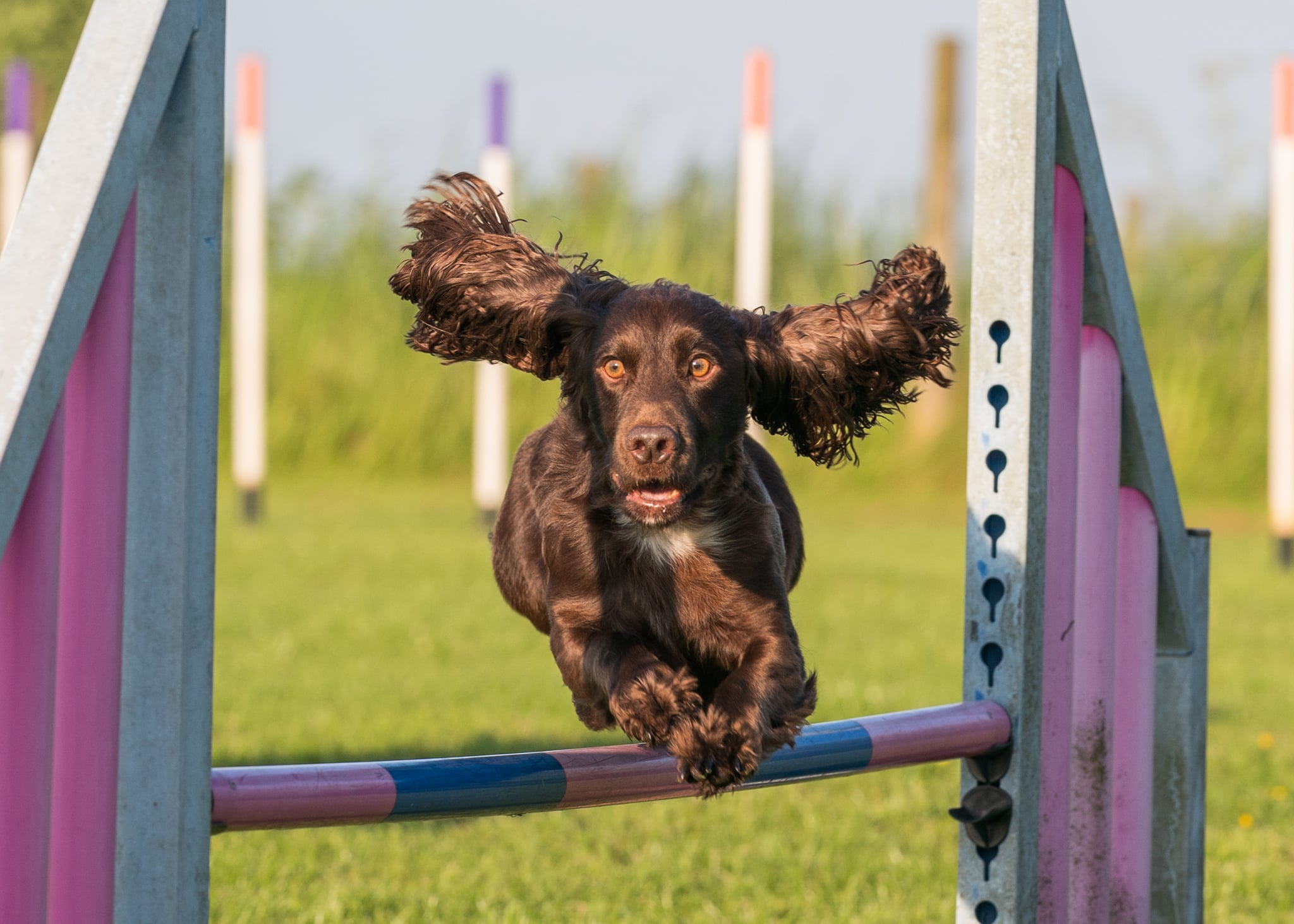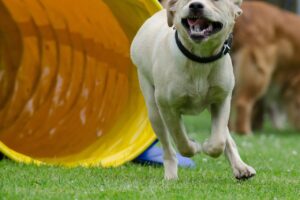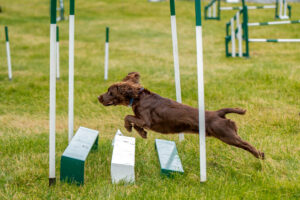
The Ultimate Guide to Getting Started in Dog Agility
Dog agility is an exciting, high-energy sport that strengthens the bond between you and your dog while providing both of you with plenty of exercise. It involves navigating an obstacle course consisting of jumps, tunnels, weave poles, and more, all while racing against the clock. If you’re looking to get started in dog agility, this guide will walk you through everything you need to know, from understanding the basics to finding the right training program.
What is Dog Agility?
Dog agility is a competitive sport where a handler directs a dog through a timed obstacle course. The dog must navigate various obstacles in a specific order, following the handler’s commands. Courses typically include jumps, tunnels, weave poles, seesaw, A-frames, and dog walks. The goal is to complete the course as quickly and accurately as possible.
Benefits of Dog Agility
Physical Exercise
Dog agility is an excellent way for both you and your dog to stay physically fit. The sport involves running, jumping, and climbing, which helps improve cardiovascular health, strength, and agility.
Mental Stimulation
The sport requires dogs to think and react quickly, providing mental stimulation that can help reduce behavioral problems caused by boredom.
Bonding
Training and competing in agility builds a strong bond between you and your dog. It requires trust and communication, which can improve your overall relationship.
Socialization
Participating in agility classes and competitions provides an opportunity for your dog to socialize with other dogs and people, improving their social skills.
Getting Started with Dog Agility
Assessing Your Dog’s Suitability
Before diving into agility training, it’s essential to assess whether your dog is a good fit for the sport. While any dog can participate in agility, some factors to consider include:
- Age: Puppies and senior dogs may need special considerations. Puppies should be at least 6 months before beginning foundations class, and a year old before starting to use equipment other than jumps and tunnels, to prevent injury, while older dogs may need a vet’s approval.
- Health: Ensure your dog is in good physical health. Dogs with joint problems, heart conditions, or other health issues may need to avoid high-impact activities.
- Temperament: Agility dogs should be energetic, eager to please, and not overly aggressive or fearful.
Basic Obedience Training
Before starting agility training, your dog should have a good grasp of basic obedience commands such as sit, stay, come, and heel. This foundation is crucial as agility requires off-leash control.
Finding a Training Class
Look for local agility clubs or training facilities that offer beginner classes. A qualified instructor can provide guidance, ensure safety, and help you and your dog learn the correct techniques.
Equipment You’ll Need
While you don’t need to invest in professional-grade equipment right away, having some basic items at home can help with practice:
- Jumps: Adjustable height bars.
- Tunnels: Collapsible fabric tunnels are easy to set up and store.
- Weave Poles: Start with six poles spaced about 24 inches apart.
- Raised Platform: A low, stable platform where your dog can learn to place their feet.
Training Techniques
Positive Reinforcement
Use positive reinforcement techniques, such as treats and praise, to encourage your dog. Avoid punishment as it can create fear and reduce your dog’s enthusiasm for the sport.
Start Slow
Begin with one obstacle at a time, ensuring your dog is comfortable with each before adding more. Gradually increase the difficulty as your dog becomes more confident.
Use Clear Commands
Consistent and clear commands are essential. Use distinct words for each obstacle, such as “jump,” “tunnel,” or “weave.” Pair verbal commands with hand signals to aid understanding.
Short, Fun Sessions
Keep training sessions short and fun to maintain your dog’s interest and enthusiasm. End on a positive note with plenty of praise and rewards.
Practice Regularly
Consistency is key in agility training. Practice regularly but avoid overtraining, which can lead to fatigue and injury.
Joining Competitions
Understanding Agility Competitions
Agility competitions, or trials, are organized by various organizations such as the Kennel Club (KC), Agility for All (A4A), and others. Each organization has its own rules and course designs.
Levels of Competition
Most organizations offer different levels of competition, starting with novice classes (grades 1-3) for beginners and progressing to more advanced levels (Grades 6-7). Entering competitions can be a fun way to test your skills and measure progress.
Preparing for Your First Trial
- Research: Understand the rules and requirements of the competition you plan to enter.
- Practice: Ensure your dog is comfortable with the types of obstacles and sequences they will encounter.
- Health Check: Have your dog checked by a vet to ensure they are fit to compete.
- Stay Calm: Dogs can pick up on their handler’s emotions, so stay calm and positive during the competition.
Common Challenges and Solutions
Distraction
Dogs can get distracted by the environment, other dogs, or spectators. Practice in different settings to help your dog stay focused.
Fear of Obstacles
Some dogs may be hesitant or afraid of certain obstacles. Introduce new equipment gradually and use positive reinforcement to build confidence.
Handler Errors
Beginners often make mistakes with timing and commands. Taking classes and practicing regularly can help you improve your handling skills.
Physical Limitations
Dogs with physical limitations can still participate in agility with modifications. Consult with a vet and a professional trainer to tailor the training to your dog’s needs.
Tips for Success
- Be Patient: Progress can be slow, but consistency and patience will pay off.
- Stay Positive: Keep training sessions upbeat and fun. Avoid frustration or anger.
- Learn from Others: Watch experienced handlers and learn from their techniques.
- Enjoy the Journey: Agility is as much about the journey as the destination. Celebrate small victories along the way.
Conclusion
Dog agility is a rewarding sport that offers numerous benefits for both you and your dog. By starting with a solid foundation in obedience, finding a good training class, and using positive reinforcement techniques, you can help your dog develop the skills and confidence needed for agility. Remember to be patient, stay positive, and enjoy the process. Whether you’re aiming to compete or just looking for a fun way to bond with your dog, agility can provide endless hours of enjoyment and physical activity. So grab some treats, set up a jump, and start your agility journey today!



